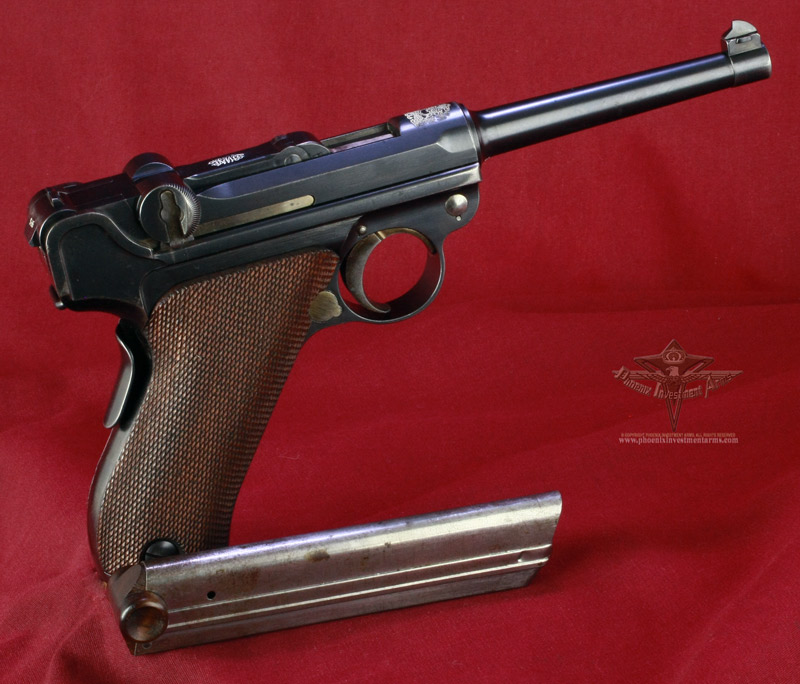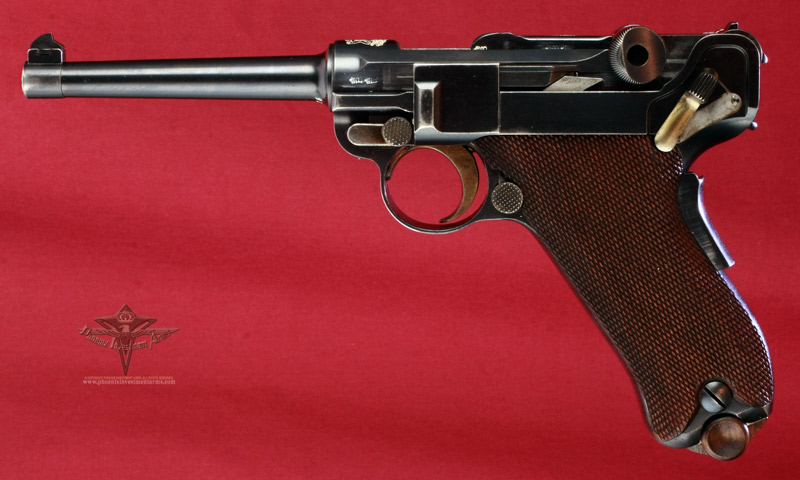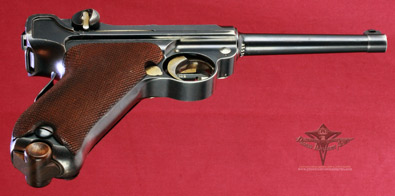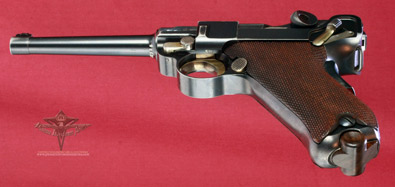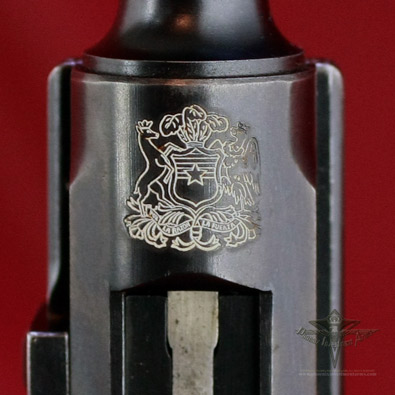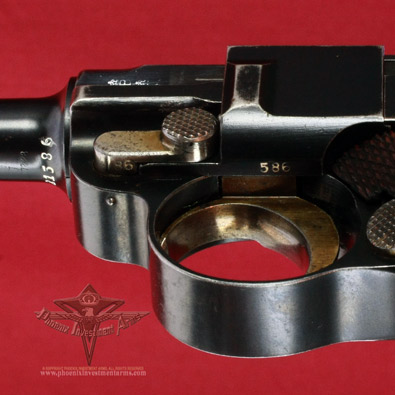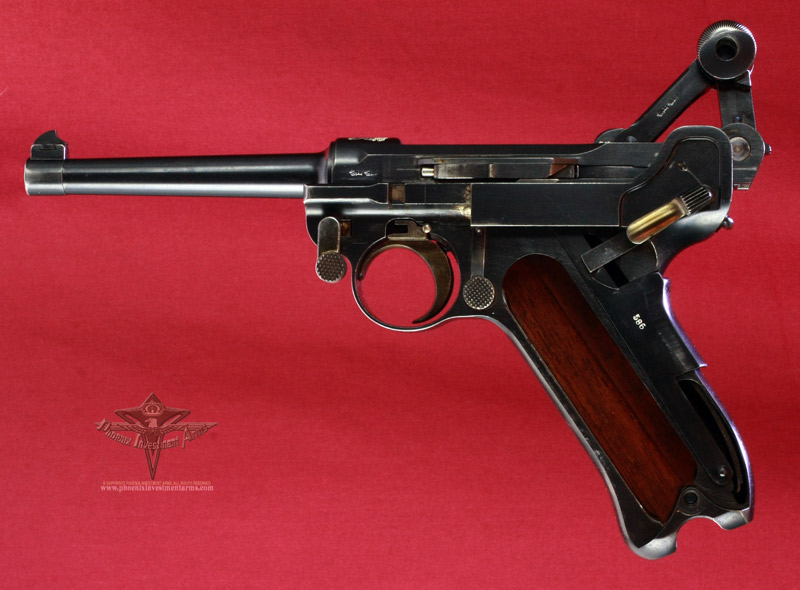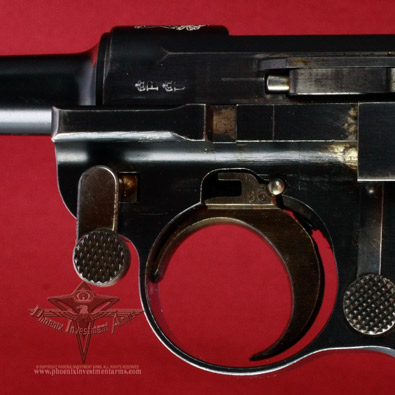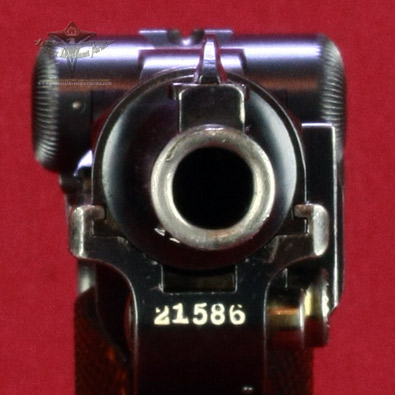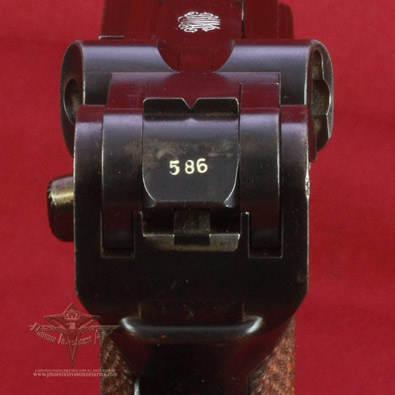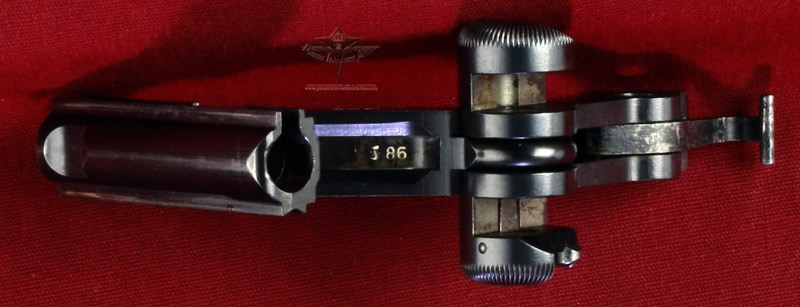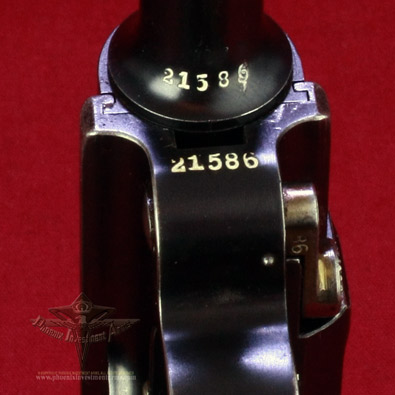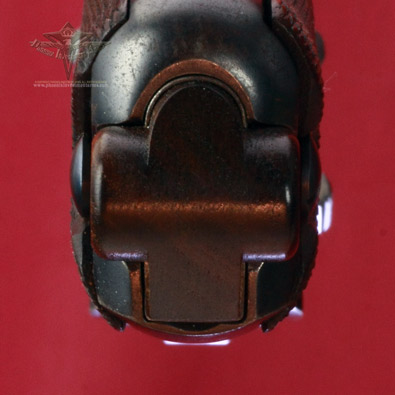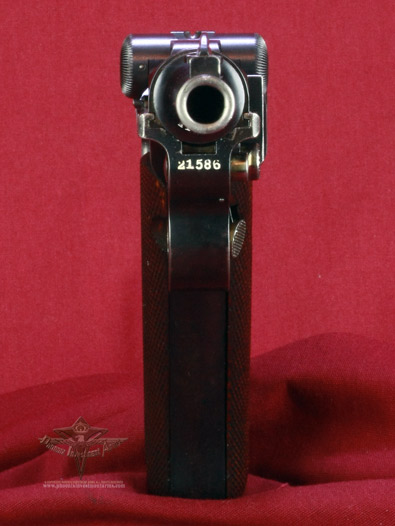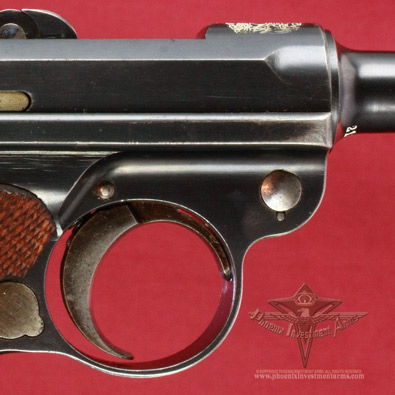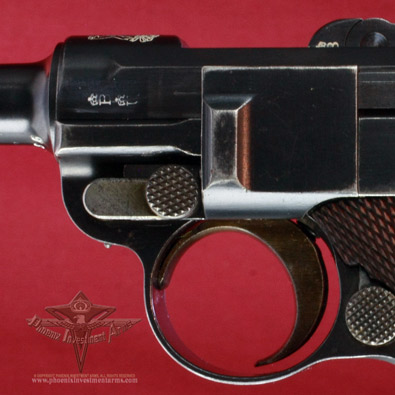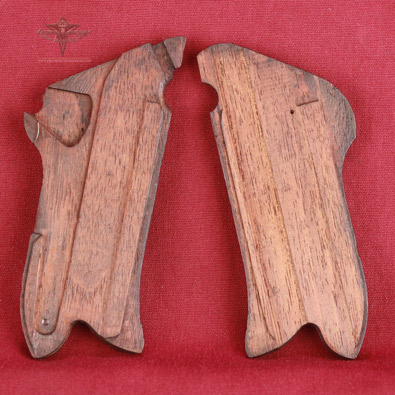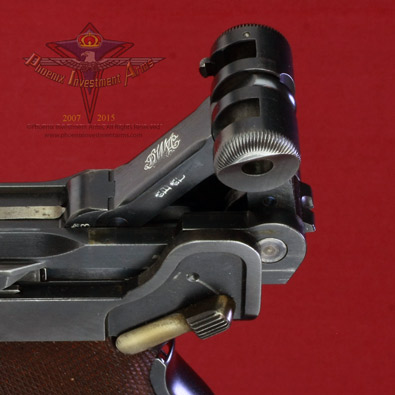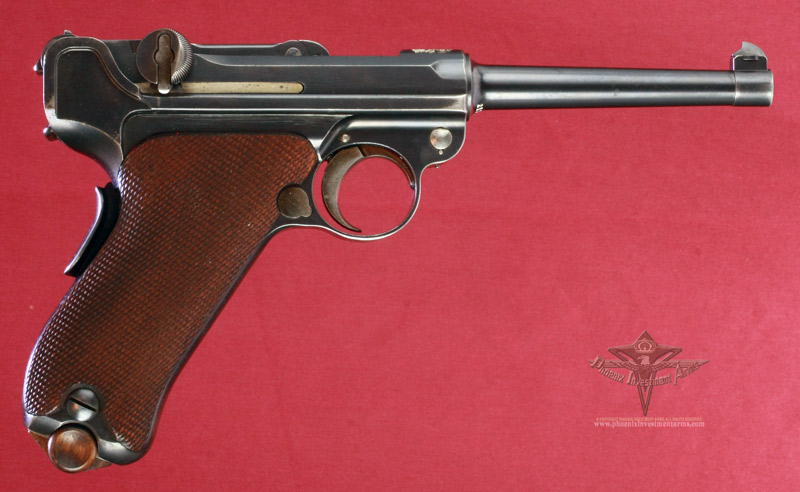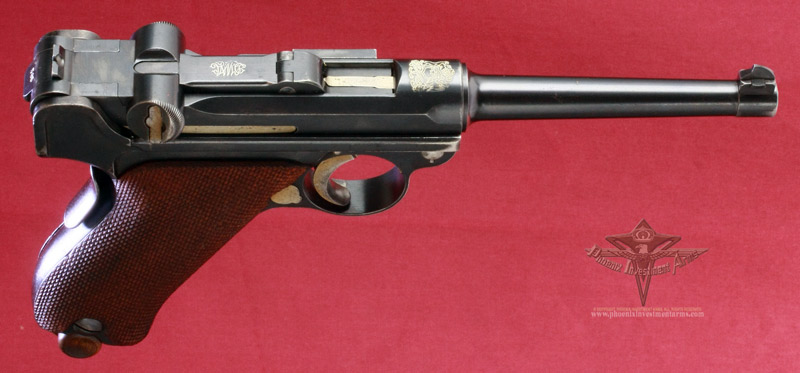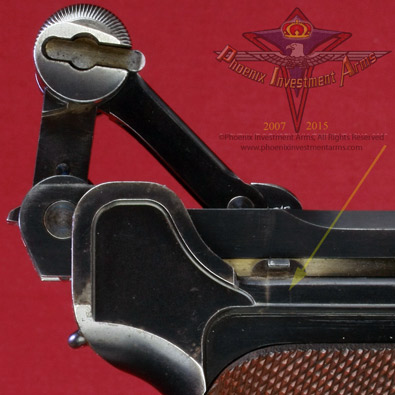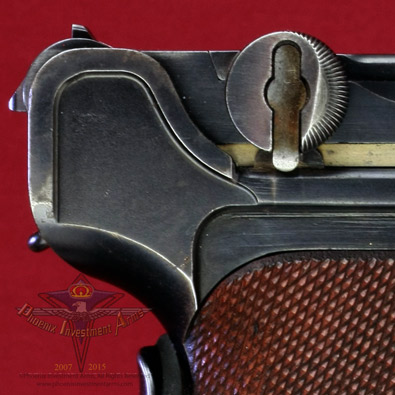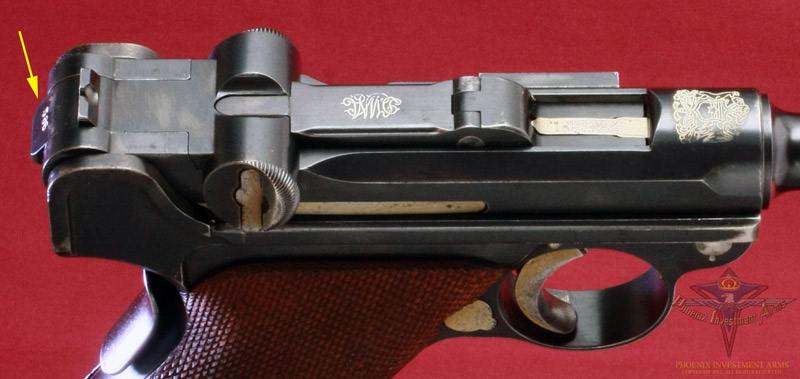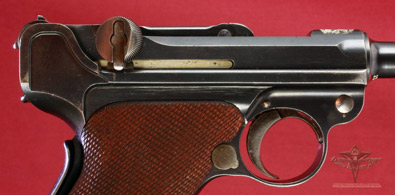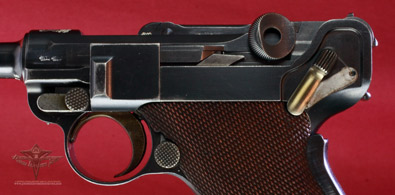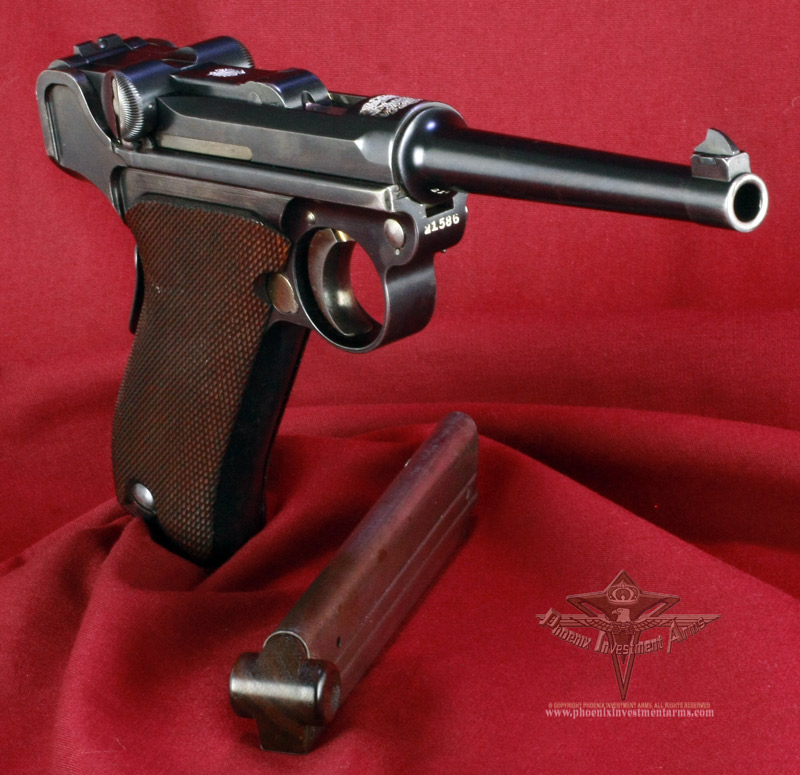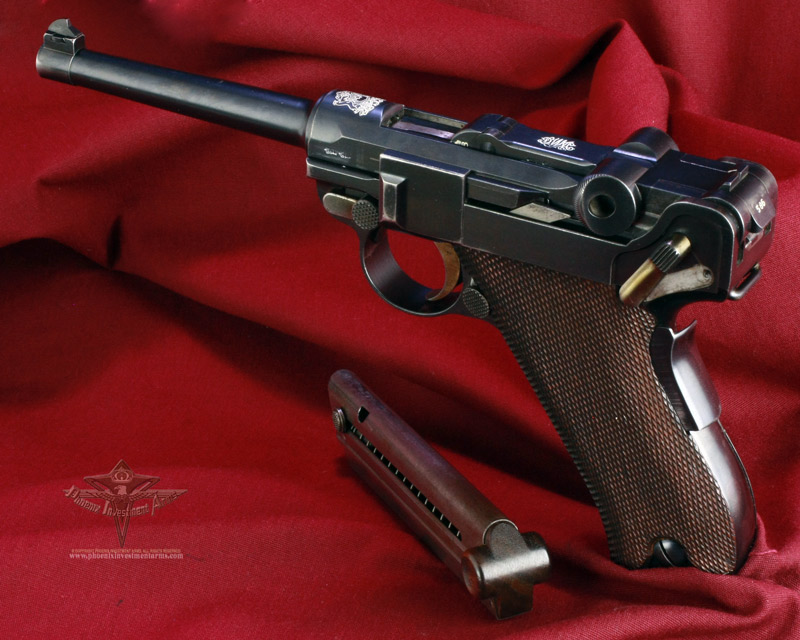|
|
|
This is a 1900 Model, 7.65mm (.30 Cal Luger) with the "old model" transitional frame with a Type III thumb safety and is not marked but is polished and the extractor is the leaf type. The Luger is an all matching serial number and a grip squeeze safety. There is an "Chilean Crest" over the Chamber and the DWM (Deutsche Waffen-und Munitionsfabriken AG) on the first toggle link. This is one of the few trial guns brought to South American countries by DWM in the 1900's to solicit sales. This is a very limited issued Luger 1/20. (1844) |
|
|
|
One of the things "known" about Lugers is that international law required guns made for commercial sales must show the country of origin. Usually this was done on the early Lugers by placing "Germany" on the front of the frame under the serial number. This gun does exhibit this 'commercial' designation. It also does not have the "German" import mark required by customs for any weapon entering a "foreign" country. This is one of the classic Lugers delivered by DWM to a high official of the government of Chili. |
|
Chili's interest in the Parabellum appears early in the 1900 models generated by the Chilean Chief of Staff, General Emilo Körner, an ex-Prussian Army Captain appointed in 1885 to train and professionalize the Chilean Army. It is believed that General Körner and George Luger tested or at least saw the testing in September 1900 in Berlin, and it is believed he was given at least six Parabellum to test in October 1900. |

